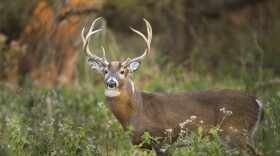-
I am always surprised to see moss exposed in wintertime. Hiking on trails or backcountry roads, I encounter moss-covered rocks, or mossy ledges that crop out on the slope, like a bed where the quilt has been pulled back part way and you can see the sheets peeking out underneath.
-
A flutter of striking black, white, and grey outside the window caught my attention, and as I walked closer I saw a dozen large-bodied, sharp-beaked birds hopping around on the treed hillside. The Clark’s Nutcrackers are here again!
-
The moon lit up my yard that morning, when I went out with the dogs at 6:30. Recently fallen snow in the surrounding Sapphire foothills reflected the full moon’s light. I could see almost as well as during the day. The horses in the pasture watched us, as I’m sure they do each morning, though we usually can’t see them. The trees and shrubs glowed in the bluish predawn.
-
In my estimation, the Black-capped Chickadee deserves the ornithology award as the ultimate prepper for the long, cold Montana winter. These songbirds must survive on stored seeds until the spring when they can again enjoy a more robust omnivorous diet. Weighing about the same as a AAA battery, Black- capped Chickadees spend the shortening days canvassing for seeds to store in hundreds of tiny hiding places embedded in their ten-mile territory.
-
The change in my cat’s fur reminds me of a larger-scale transition undergone by the snowshoe hare. This hare sheds her brown summer coat at the end of autumn while growing new fur that is not only thicker, but another color altogether to help stay aligned with the change in seasons.
-
Imagine being on the shore of the Western Interior Seaway, 73 million years ago, near what is now Fort Peck Lake and the Charles M. Russell National Wildlife Refuge. (Yes, Montana once had beachfront property along a huge, warm, shallow inland sea!) You spy elasmosaurid Nakonanectes bradti as she comes up for air, showing teeth the size of a great white shark’s.
-
I have the greatest opportunity to observe the phenology of the ever-present white-tailed deer. White-tailed deer are delightful to watch as they graze in the meadow in spring and summer, gather around a fallen spruce to munch on sweet lichens, or leap over fallen logs, their white fluffy tails waving like flags.
-
I looked up into the starry night and a flood of emotions came over me as I thought about my T̓at̓áyaqn (Bitterroot Salish) ancestors who hunted this way for thousands of years. All of a sudden, snčlčlép (coyotes) began howling and I felt this strong connection to my ancestors and the bison. This hunt helped me realize the sacred significance of bison to my people and I wanted to find out more about these glorious animals.
-
Tail feathers, and tails in general, provide a variety of functions for different animal species. The prehensile tails of monkeys in Central and South America are the ultimate fifth appendage. These tails can be used for grasping and hanging from branches and manipulating objects. Curiously, while African monkey species often have similar tails, none have grasping prehensile tails.
-
Visitors to Montana’s Jim Girard Memorial Tamaracks Grove near Seeley Lake have differing reactions when viewing Gus for the first time. I was awed by the 163-foot height, craning my neck to see the very tippy top and then tilting back even further to view the additional 10 feet of dead tree top.
Play Live Radio
Next Up:
0:00
0:00
Available On Air Stations










